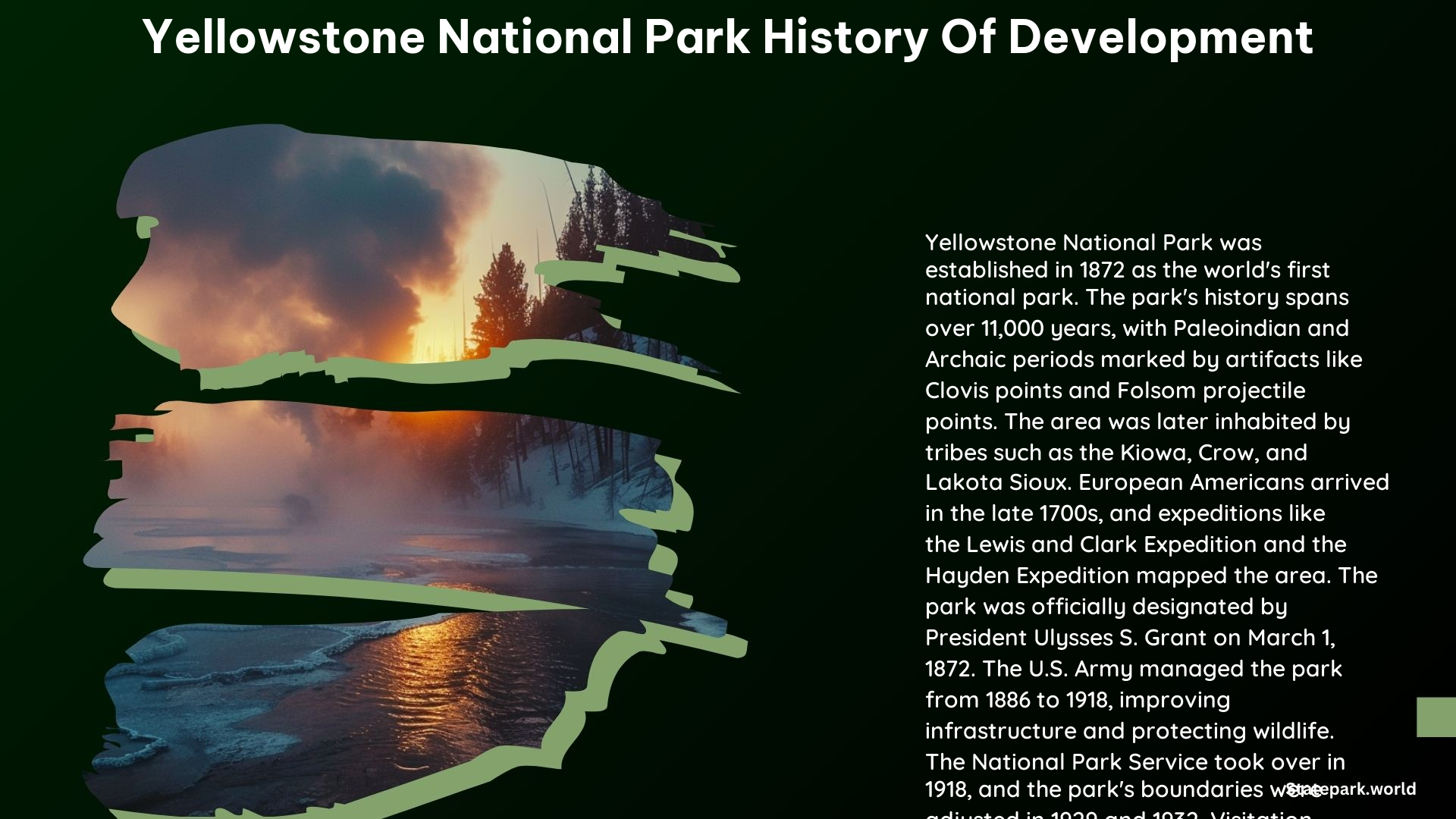Yellowstone National Park, established in 1872, is the world’s first national park. The park’s history spans over 10,000 years, with human occupation dating back to the Paleoindian period. In this comprehensive blog post, we’ll explore the key milestones in the development of this iconic American treasure.
Paleoindian & Archaic Period (11,000 – 1,500 years ago)
The earliest evidence of human presence in the Yellowstone region dates back to the Paleoindian period, over 11,000 years ago. Artifacts such as Clovis points and Folsom projectile points have been discovered, indicating the presence of these early inhabitants. Additionally, numerous artifacts have been found around Yellowstone Lake, with one site dated to 9,350 years ago, suggesting the area was used as a camp during the Archaic period.
Native American Tribes and Fur Traders (500–1800s CE)

In the centuries that followed, the Yellowstone region was home to various Native American tribes, including the Kiowa, Crow, and Lakota Sioux. These tribes used the area for hunting, gathering, and spiritual practices. In the late 1700s, fur traders began to explore the region, accessing it via the rivers.
Expeditions and the Establishment of Yellowstone National Park (1870s)
The 1870s marked a pivotal period in the history of Yellowstone. Several expeditions, including the Folsom–Cook–Peterson, Washburn–Langford–Doane, and Hayden expeditions, explored and mapped the area, revealing its unique geological features and natural wonders. On March 1, 1872, President Ulysses S. Grant signed the Yellowstone National Park Protection Act, establishing Yellowstone as the world’s first national park.
Early Park Development (Late 1870s)
In the late 1870s, Superintendent Philetus W. Norris oversaw the construction of roads and the building of the park’s headquarters at Mammoth Hot Springs. This laid the foundation for the park’s infrastructure and accessibility.
U.S. Army Administration and Railroad Expansion (1880s)
In 1886, the U.S. Army took over the administration of Yellowstone to address issues such as poaching, vandalism, and other crimes. During this time, the Northern Pacific Railway built a spur line to the park’s northern entrance, promoting tourism and making the park more accessible to visitors.
Architectural Landmarks and the National Park Service (1900s-1910s)
The early 20th century saw the construction of several iconic buildings within Yellowstone, including the Old Faithful Inn in 1904 and the Roosevelt Lodge in 1920. In 1916, the National Park Service was established, and Yellowstone’s first park rangers were appointed in 1918.
Boundary Adjustments and World War II (1920s-1940s)
In 1929, the park’s boundaries were expanded to include petrified trees and the watershed of Pebble Creek. During World War II, park activity declined, but visitation jumped after the war, reaching one million visitors in 1948.
Modern Era Developments and Conservation Efforts
In the modern era, Yellowstone has undergone significant infrastructure development as part of the National Park Service’s Mission 66 program (1955–1966). Ongoing scientific research and conservation initiatives continue to protect and preserve Yellowstone’s natural and cultural resources for generations to come.
Yellowstone National Park’s rich history is a testament to the enduring value of preserving our natural wonders. From the earliest human inhabitants to the modern-day visitors, this iconic park has captivated the hearts and minds of people around the world. As we continue to explore and appreciate Yellowstone, we honor the legacy of those who fought to protect this remarkable place.
References:
1. https://www.yellowstonenationalparklodges.com/connect/yellowstone-hot-spot/timeline-150-years-of-yellowstone/
2. https://www.britannica.com/place/Yellowstone-National-Park/Development-of-the-park
3. https://www.nps.gov/yell/learn/historyculture/index.htm
4. https://www.nps.gov/yell/learn/historyculture/yellowstoneestablishment.htm
5. https://www.nps.gov/yell/learn/historyculture/park-history.htm
